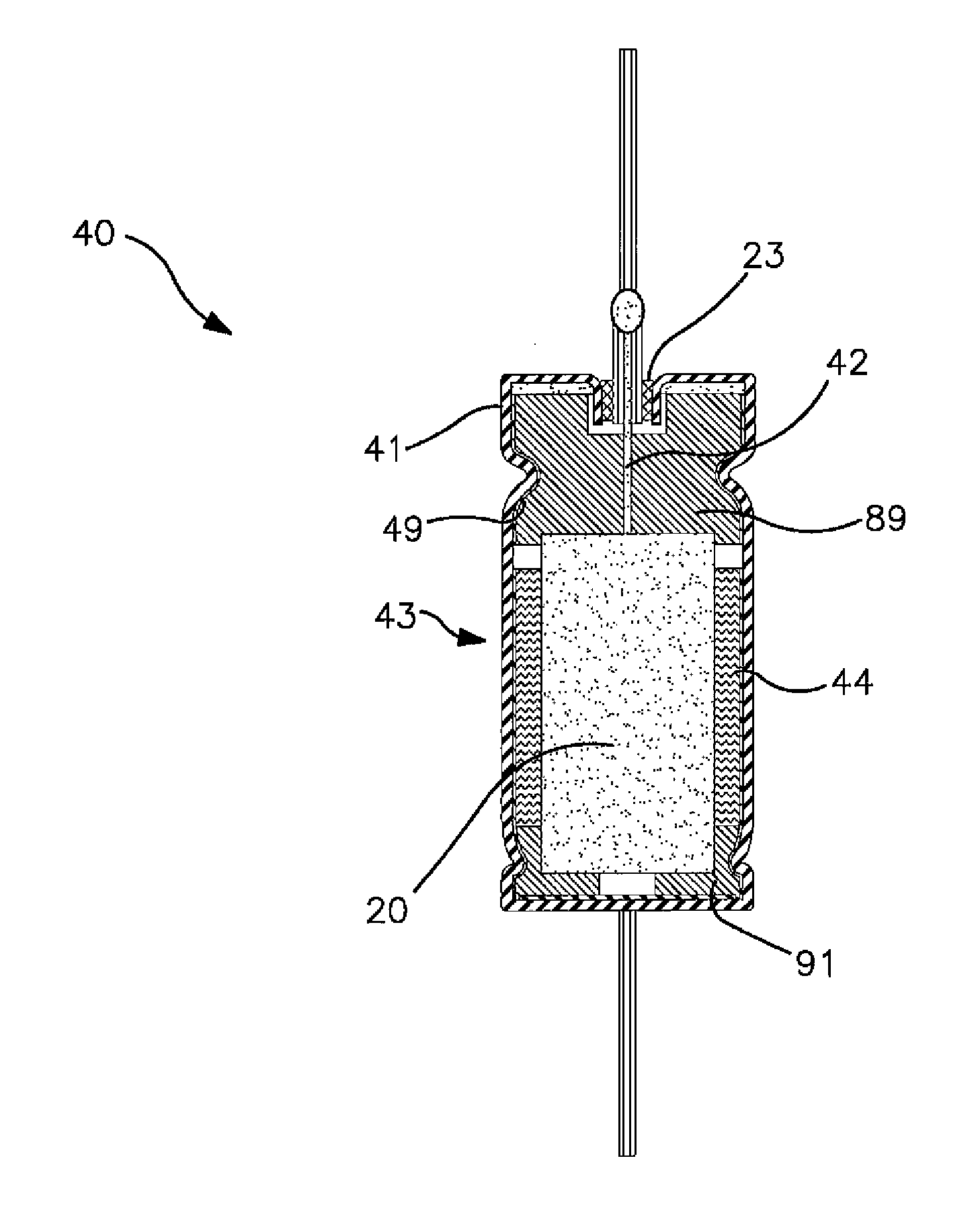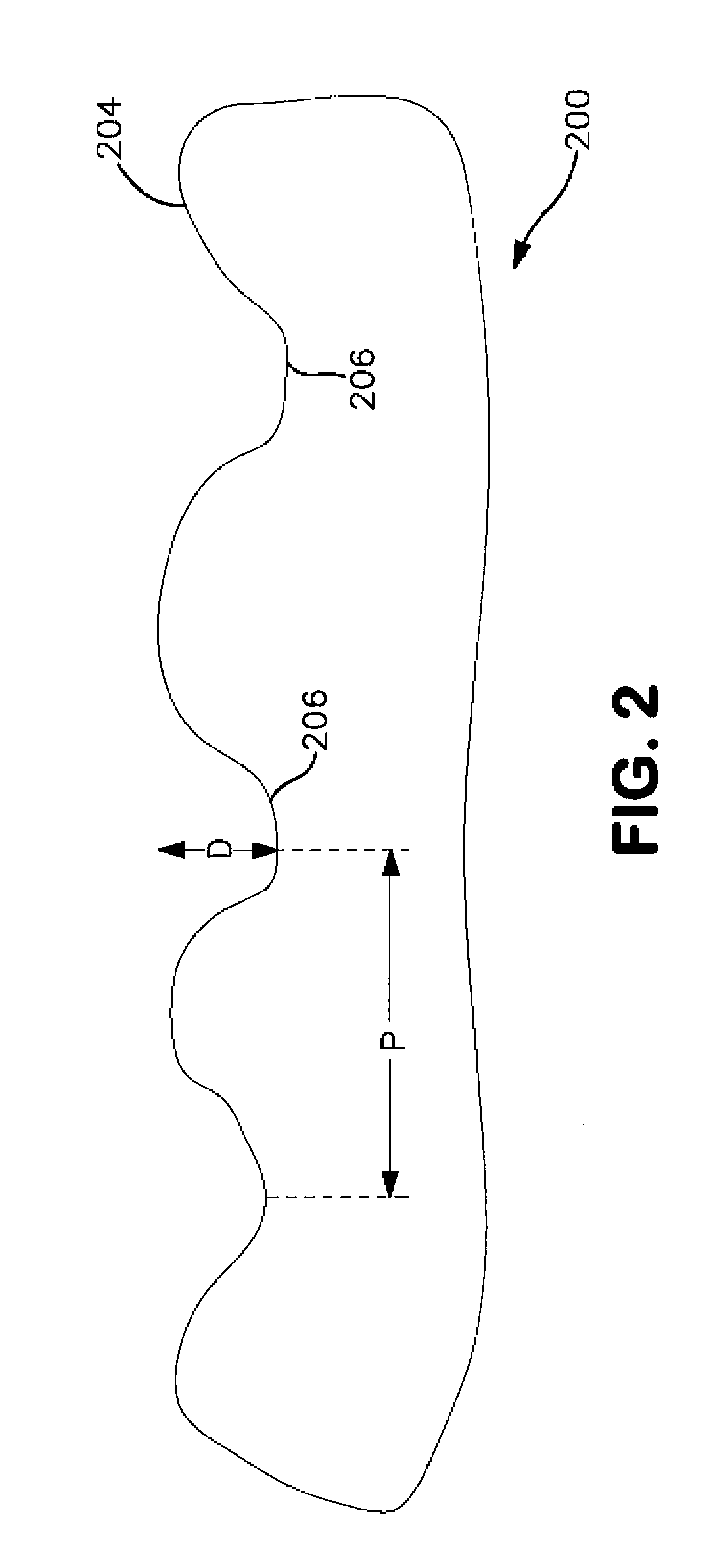Technique for Forming a Cathode of a Wet Electrolytic Capacitor
a technology of electrolytic capacitor and cathode, which is applied in the manufacture of electrolytic capacitors, variable capacitors, conductors, etc., can solve the problems of low unit cell voltage of this type of capacitor and easy disassembly of coatings
- Summary
- Abstract
- Description
- Claims
- Application Information
AI Technical Summary
Benefits of technology
Problems solved by technology
Method used
Image
Examples
example 1
[0061]Initially, 100 pieces of cylindrical tantalum cans with a size of 18.3 mm (length)×9.1 mm (internal diameter) were sandblasted with a JetStreem Blaster II (SCM System, inc.). The sandblasting media was black silicone carbide grit having a size of 63 to 106 μm). The media flow rate was 0.5 grams per second via a 3.2-millimeter blasting nozzle. All pieces of cylindrical tantalum cans were sandblasted to a control level 10.7 millimeters (from potential 18.3 millimeters), using appropriate ferrules. The sandblasting time was 20 seconds. These samples were then degreased in water with surfactants in an ultrasonic bath for 5 minutes, rinsed 3 times in deionized water, and then dried at a temperature of 85° C. for 5 minutes. A precursor solution was thereafter applied to the microroughened surface that contained four (4) parts by weight of ethanol (Sigma-Aldrich, Co.), 0.1 part by weight of methylpyrrolidone (Sigma-Aldrich, Co.), 1 part by weight of 3,4-ethylenedioxythiophene (H.C. S...
example 2
[0062]100 pieces of cylindrical tantalum cans were prepared as described in Example 1, except that the sandblasting time was 15 seconds.
example 3
[0063]100 pieces of cylindrical tantalum cans were prepared as described in Example 1, except that the sandblasting time was 10 seconds.
PUM
| Property | Measurement | Unit |
|---|---|---|
| temperature | aaaaa | aaaaa |
| area | aaaaa | aaaaa |
| area | aaaaa | aaaaa |
Abstract
Description
Claims
Application Information
 Login to View More
Login to View More - R&D
- Intellectual Property
- Life Sciences
- Materials
- Tech Scout
- Unparalleled Data Quality
- Higher Quality Content
- 60% Fewer Hallucinations
Browse by: Latest US Patents, China's latest patents, Technical Efficacy Thesaurus, Application Domain, Technology Topic, Popular Technical Reports.
© 2025 PatSnap. All rights reserved.Legal|Privacy policy|Modern Slavery Act Transparency Statement|Sitemap|About US| Contact US: help@patsnap.com



